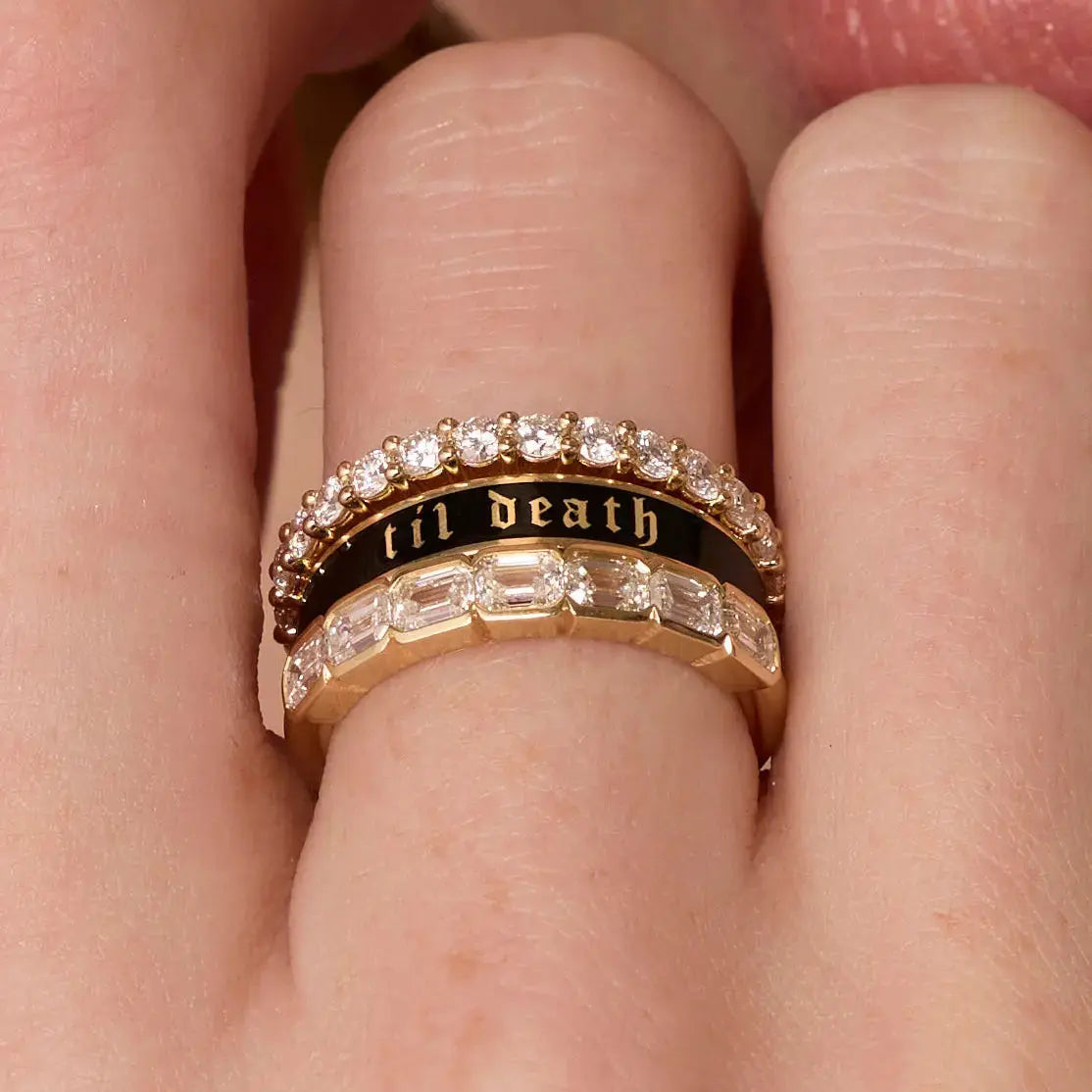We are over the moon for our October babes… and only slightly jealous of their insane birthstone selection. Not only do they get to pick from phenomenal opal gemstones and all of her precious varieties, but they also get to call tourmaline and her range of tantalizing hues their birthstone as well. Between the endless unique patterns and natural color options, there’s bound to be something for everyone.
Opal: The Traditional October Birthstone
First up, let’s talk about the traditional October birthstone: opal. We love an opal moment here at Marrow. They’re truly the chameleons of the gemstone kingdom and we love watching them shape shift and transform their color palette with every stack or one-of-a-kind creation.
They can pull off a sweet, sweet pastel look when placed next to pinks and lavenders, or they can amp up the gemmy vibrance of an emerald or ruby in a heartbeat.
Fun fact: An opal’s pattern can be made up of tons of tiny pinpoints of color or multiple large mosaic flashes of color, but because of the tiny silica microns and their endless structural arrangements, no two opals and their patterns are the same. Opals also have different body colors like black, blue, grey, green, brown, orange, pink and more.
Opal Hardness & Care
While we love to love on opals, you need to be very careful when incorporating them into your everyday look. These colorful cuties are ranked as a 5-6.5 on the Mohs hardness scale, which means they have about the hardness of a wine glass!
Make sure your opal piece is the last thing you put on when you go out and the first thing you take off when you come home— don’t even think about hiking or cooking while wearing an opal!
Be careful to avoid extreme temperature changes and high heat when you’re wearing your opals because they are susceptible to fracture and crazing in just the blink of an eye. When cleaning your opal, we recommend using some mild dish-soapy water and a soft cloth to make your piece look brand spanking new again. In all things fine jewelry, the longevity of your precious pieces goes hand in hand with how well you take care of them.
Tourmaline: October's Secret Birthstone
Tourmalines are newer to the October birthstone party, but we love them just as much as opals! Ranging from the deep and sultry pinks of rubellites to the glowy almost radiating greenish blue of paraibas, we can't get enough.
Depending on your design mood, they can hold down the warm color palette or synchronize in the cool color pool.
Tourmalines are typically cut with long, broad, parallel facets and into geometric shapes so you can easily notice the color change of the crystal structure. Take a second to google "Watermelon Tourmaline"—it’s one of our favorites. It looks just like it sounds: the outer rim of the gem is green with a pink circle in the center, just like its namesake.
Similar to our new friend spinel (August’s birthstone), tourmalines have been mistaken for rubies and emeralds for centuries. Just like you might use a different crystal to promote or ward off different energies, tourmaline’s colors have been thought to have their own healing properties as well!
Pink tourmaline is associated with love, compassion and gentleness. Green tourmaline can bring courage, strength and stamina. Black tourmaline bestows a sense of self-confidence to the wearer. Regardless of color and its suggested meaning, if a stone speaks to you and makes you feel like the most powerful and radiant version of yourself, just rock it.
Tourmaline Hardness & Care
Higher than its birthstone buddy, tourmaline ranks as a 7.00-7.50 on the Mohs hardness scale.Similar to your opals, we recommend using mild, dish-soapy water when cleaning your tourmalines, but you can give it a little extra scrubbing umph with a soft toothbrush.
As obsessed with October birthstones as we are? Shop the collection here!
Have questions about these beauties or need something in a pinch? We’re here to help! Feel free to contact us here.


![Til Death Black Enamel Band - 4mm [yellow gold front]](http://www.marrowfine.com/cdn/shop/files/Tildeathblackenamel_YellowGold.jpg?crop=center&height=1500&v=1760536289&width=1500)

![The Harley Ring [Yellow Gold]](http://www.marrowfine.com/cdn/shop/files/The_Harley_Ring_YG.jpg?crop=center&height=1500&v=1751935264&width=1500)
![The Harley Ring and Custom Enamel Band in Luxardo [on hand]](http://www.marrowfine.com/cdn/shop/files/WDHarley_CustomEnamelBand.jpg?crop=center&height=2462&v=1753724376&width=2462)

![Til Death Black Enamel Band - 6mm [Yellow Gold]](http://www.marrowfine.com/cdn/shop/files/TilDeathBlackEnamel6mm.jpg?crop=center&height=240&v=1760536277&width=240)
![Something Blue Enamel Band [Yellow Gold]](http://www.marrowfine.com/cdn/shop/files/SomethingBlueEnamelBand.png?crop=center&height=240&v=1751935122&width=240)
![Everyday Dome Ring [Yellow Gold]](http://www.marrowfine.com/cdn/shop/files/Everyday_Dome_Ring_YG.jpg?crop=center&height=240&v=1751935188&width=240)





